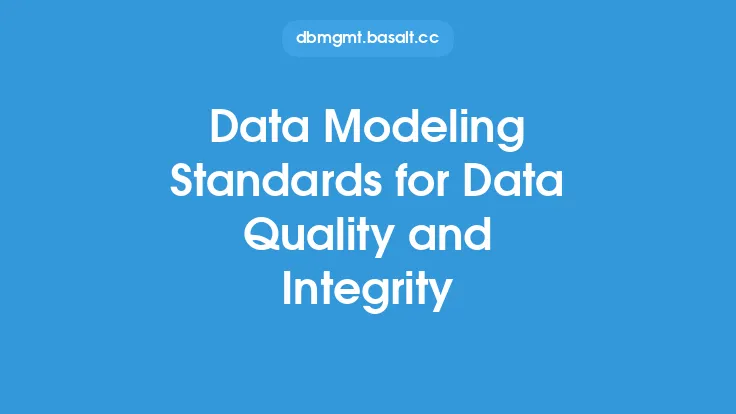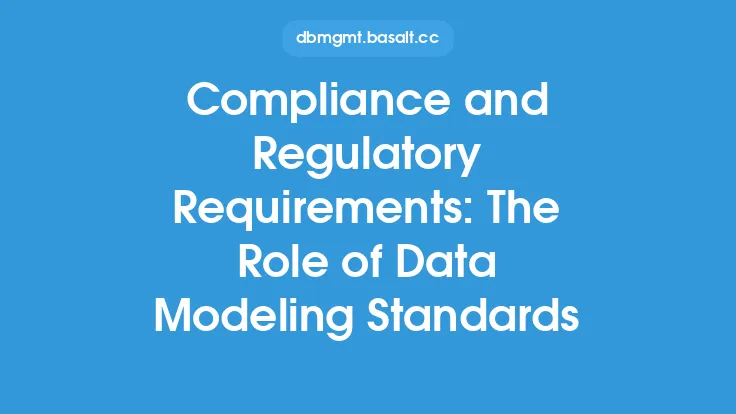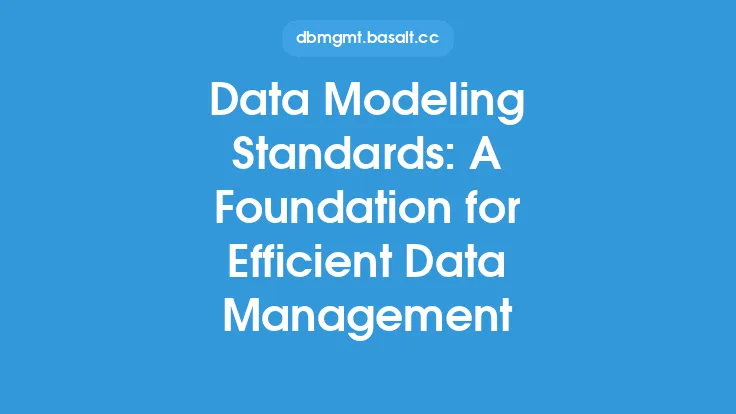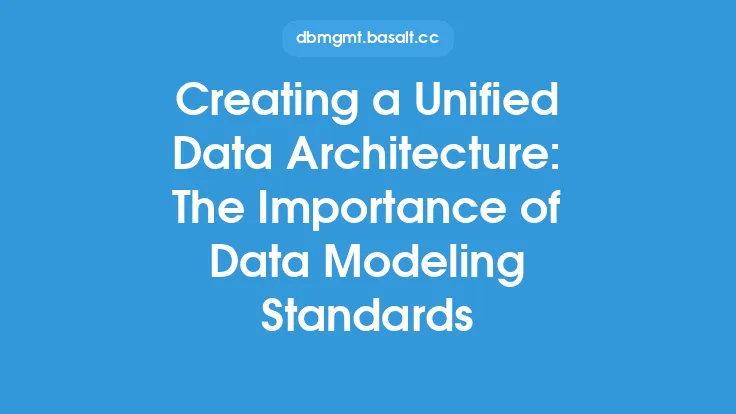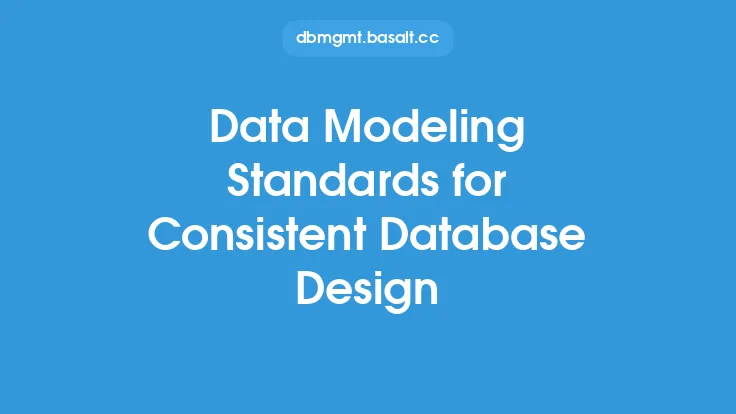Data modeling is a crucial aspect of data management, as it enables organizations to create a conceptual representation of their data assets. However, the lack of standardization in data modeling can lead to confusion, miscommunication, and inefficiencies. Establishing a common language is essential to ensure that data models are consistent, accurate, and usable across different stakeholders and systems. This is where data modeling standards and terminology come into play.
Introduction to Data Modeling Standards
Data modeling standards provide a set of guidelines, rules, and best practices for creating, maintaining, and using data models. These standards help ensure that data models are consistent, complete, and accurate, which is critical for making informed decisions, improving data quality, and reducing errors. Data modeling standards can be categorized into two main types: syntactic and semantic. Syntactic standards focus on the structure and format of data models, while semantic standards focus on the meaning and interpretation of data elements.
Key Components of Data Modeling Standards
Data modeling standards typically consist of several key components, including:
- Entity-relationship models: These models define the relationships between entities, such as customers, orders, and products.
- Data types: These define the format and structure of data elements, such as integers, strings, and dates.
- Data validation rules: These rules ensure that data elements conform to specific formats, ranges, or patterns.
- Data normalization rules: These rules ensure that data is organized in a consistent and efficient manner.
- Metadata standards: These standards define the structure and content of metadata, such as data element names, descriptions, and definitions.
Benefits of Standardizing Data Modeling Terminology
Standardizing data modeling terminology is essential for ensuring that data models are consistent, accurate, and usable. The benefits of standardizing data modeling terminology include:
- Improved communication: Standardized terminology ensures that stakeholders have a common understanding of data elements and their meanings.
- Increased efficiency: Standardized terminology reduces errors, misinterpretations, and misunderstandings, which can lead to significant productivity gains.
- Better data quality: Standardized terminology ensures that data elements are defined consistently, which improves data quality and reduces errors.
- Enhanced data sharing and collaboration: Standardized terminology enables organizations to share and collaborate on data models more effectively, which can lead to improved decision-making and business outcomes.
Industry-Recognized Data Modeling Standards
Several industry-recognized data modeling standards exist, including:
- The Object Management Group (OMG) Common Data Model (CDM): This standard provides a common data model for industries such as finance, healthcare, and government.
- The International Organization for Standardization (ISO) 19773:2017: This standard provides a framework for data modeling and metadata management.
- The Data Governance Institute (DGI) Data Governance Framework: This framework provides a set of guidelines and best practices for data governance, including data modeling standards.
- The Open Group ArchiMate: This standard provides a framework for enterprise architecture, including data modeling and metadata management.
Best Practices for Implementing Data Modeling Standards
Implementing data modeling standards requires a structured approach. Best practices include:
- Establishing a data governance framework: This framework should define the roles, responsibilities, and processes for creating, maintaining, and using data models.
- Developing a data modeling methodology: This methodology should define the steps, tools, and techniques for creating and maintaining data models.
- Creating a data dictionary: This dictionary should define the standard terminology, data types, and data validation rules for data elements.
- Providing training and education: Stakeholders should receive training and education on data modeling standards, terminology, and best practices.
- Continuously monitoring and improving: Data modeling standards and terminology should be continuously monitored and improved to ensure they remain relevant and effective.
Technical Aspects of Data Modeling Standards
From a technical perspective, data modeling standards can be implemented using various tools and technologies, such as:
- Data modeling software: Tools like Entity-Relationship Diagram (ERD) software, data modeling tools, and metadata management software can help create, maintain, and manage data models.
- Data governance platforms: Platforms like data governance software, data quality software, and metadata management software can help implement and enforce data modeling standards.
- Data integration tools: Tools like Extract, Transform, Load (ETL) software, data virtualization software, and data warehousing software can help integrate and manage data from multiple sources.
- Data storage solutions: Solutions like relational databases, NoSQL databases, and cloud-based data storage solutions can help store and manage data in a standardized and efficient manner.
Conclusion
Establishing a common language through data modeling standards and terminology is essential for ensuring that data models are consistent, accurate, and usable. By implementing industry-recognized data modeling standards, organizations can improve communication, increase efficiency, and enhance data quality. By following best practices and using various tools and technologies, organizations can create a robust data modeling framework that supports their business goals and objectives.
